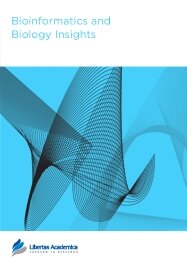

Publication Date: 26 Aug 2013
Type: Original Research
Journal: Bioinformatics and Biology Insights
Citation: Bioinformatics and Biology Insights 2013:7 271-288
doi: 10.4137/BBI.S12449

Histone modifications occur in precise patterns, with several modifications known to affect the binding of proteins. These interactions affect the chromatin structure, gene regulation, and cell cycle events. The dual modifications on the H3 tail, serine10 phosphorylation, and lysine14 acetylation (H3Ser10PLys14Ac) are reported to be crucial for interaction with 14-3-3ζ. However, the mechanism by which H3Ser10P along with neighboring site-specific acetylation(s) is targeted by its regulatory proteins, including kinase and phosphatase, is not fully understood. We carried out molecular modeling studies to understand the interaction of 14-3-3ζ, and its regulatory proteins, mitogen-activated protein kinase phosphatase-1 (MKP1), and mitogen- and stress-activated protein kinase-1 (MSK1) with phosphorylated H3Ser10 alone or in combination with acetylated H3Lys9 and Lys14. In silico molecular association studies suggested that acetylated Lys14 and phosphorylated Ser10 of H3 shows the highest binding affinity towards 14-3-3ζ. In addition, acetylation of H3Lys9 along with Ser10PLys14Ac favors the interaction of the phosphatase, MKP1, for dephosphorylation of H3Ser10P. Further, MAP kinase, MSK1 phosphorylates the unmodified H3Ser10 containing N-terminal tail with maximum affinity compared to the N-terminal tail with H3Lys9AcLys14Ac. The data clearly suggest that opposing enzymatic activity of MSK1 and MKP1 corroborates with non-acetylated and acetylated, H3Lys9Lys14, respectively. Our in silico data highlights that site-specific phosphorylation (H3Ser10P) and acetylation (H3Lys9 and H3Lys14) of H3 are essential for the interaction with their regulatory proteins (MKP1, MSK1, and 14-3-3ζ) and plays a major role in the regulation of chromatin structure.
PDF (8.34 MB PDF FORMAT)
RIS citation (ENDNOTE, REFERENCE MANAGER, PROCITE, REFWORKS)
BibTex citation (BIBDESK, LATEX)
XML
PMC HTML

Recently we have published a review on sRNA prediction in bacteria. Submission and processing is fast and very fair in Bioinformatics and Biology Insights. I have received emails at every stage of the review process until decision making. The experts' comments and suggestions has helped us to improve the manuscript. Because of the indexing and high visibility of the article in BBI we expect to receive a high number of citations. ...
Facebook Google+ Twitter
Pinterest Tumblr YouTube